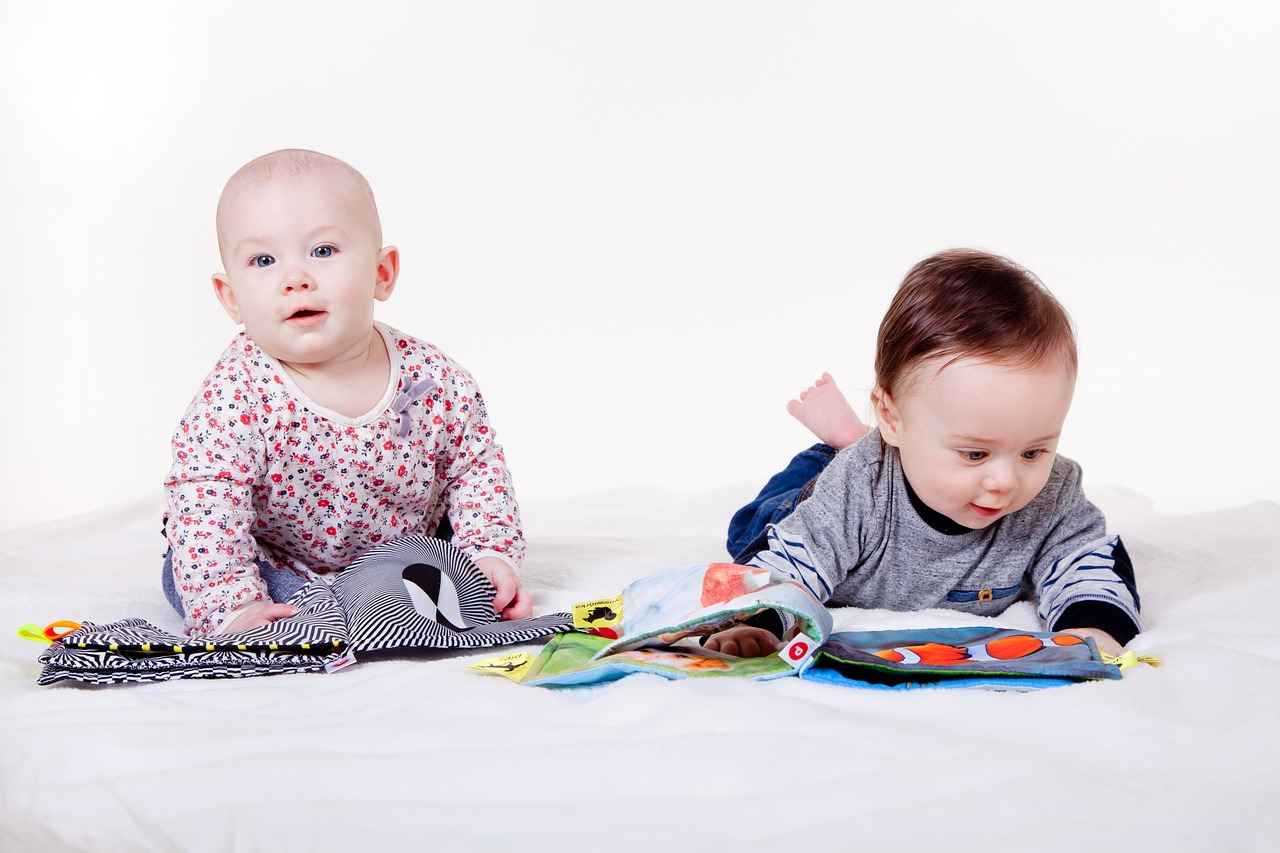This article delves into a variety of engaging science movies designed specifically for children. These films not only entertain but also serve as valuable educational tools, igniting curiosity and inspiring the minds of young viewers.
Why Science Movies Are Important for Kids
Science movies provide a captivating way to introduce complex scientific concepts to children. By combining storytelling with educational content, these films make learning enjoyable and accessible, fostering a lifelong love for science and exploration.
Top 10 Science Movies for Kids
- Wall-E: This animated film addresses pressing environmental issues through the story of a waste-collecting robot, promoting discussions about sustainability.
- Big Hero 6: A blend of robotics and healthcare, this film showcases innovation and teamwork through the adventures of a young inventor and his inflatable robot.
- The Magic School Bus Rides Again: Following Ms. Frizzle and her class, this series explores various scientific topics, providing an entertaining educational experience.
- Meet the Robinsons: A time-travel adventure that emphasizes the importance of innovation and the impact of choices, inspiring creativity in children.
- Cloudy with a Chance of Meatballs: This whimsical film introduces meteorology and the consequences of scientific experimentation in a humorous way.
- Inside Out: Exploring emotions and psychology, this film offers insights into how feelings influence thoughts and behaviors, promoting emotional intelligence.
- Zootopia: A buddy-cop film that delves into sociology and anthropology, encouraging discussions about diversity and societal structures.
How to Choose the Right Science Movie
When selecting science movies, consider factors such as age appropriateness, educational value, and personal interests to ensure a beneficial viewing experience for children.
Discussion Questions to Enhance Learning
After watching a film, engage children with thoughtful questions to deepen their understanding and encourage critical thinking about the scientific concepts presented.
Integrating Science Movies into Education
Incorporating science films into lesson plans can make learning more dynamic, providing visual context to theoretical concepts and enhancing traditional teaching methods.
Parental Guidance: Watching Together
Watching science movies together allows parents to facilitate discussions, answer questions, and reinforce lessons, creating a shared learning experience that strengthens family bonds.
Conclusion: The Future of Learning through Film
Science movies are a powerful educational tool, blending entertainment with valuable lessons and inspiring the next generation of thinkers, innovators, and problem-solvers.

Why Science Movies Are Important for Kids
Science movies play a crucial role in educating children by transforming complex scientific concepts into engaging stories. These films serve as a bridge between entertainment and education, making learning a delightful experience. By presenting scientific ideas in a fun and relatable way, these movies can spark curiosity and inspire a lifelong love for science.
One of the most significant advantages of science movies is their ability to simplify abstract concepts. For instance, movies like Wall-E and Cloudy with a Chance of Meatballs introduce children to environmental issues and meteorology, respectively. Such films allow young viewers to grasp these ideas without feeling overwhelmed. By incorporating humor and relatable characters, these movies help children understand the implications of science in everyday life.
Moreover, science movies can foster critical thinking and problem-solving skills. When children watch characters navigate scientific challenges, they learn to think creatively and approach problems with a solution-oriented mindset. This is particularly evident in films like Big Hero 6, where innovation and teamwork are central themes.
Additionally, science movies can encourage curiosity about the world around them. After watching a film, children often feel inspired to ask questions and seek answers, leading to a deeper understanding of scientific principles. This inquisitive mindset is essential for young learners as it lays the foundation for future exploration and discovery.
Finally, science movies can serve as a tool for parents and educators. By watching these films together, adults can facilitate discussions about the scientific concepts presented, reinforcing what children have learned. This shared experience not only strengthens family bonds but also enhances the educational value of the film.
In conclusion, science movies are an invaluable resource for children’s education. They make learning enjoyable, promote critical thinking, and inspire curiosity, ultimately fostering a generation of informed and engaged young minds.

Top 10 Science Movies for Kids
This section showcases a carefully curated list of the most engaging science-themed films suitable for children. Each entry includes a brief synopsis and highlights the educational themes that can enhance learning experiences, making these films not just entertaining but also enriching.
| Movie Title | Synopsis | Educational Themes |
|---|---|---|
| Wall-E | Follow the journey of a small waste-collecting robot who embarks on a space adventure that ultimately decides the fate of mankind. | Environmental awareness, sustainability, and the impact of consumerism. |
| Big Hero 6 | A young inventor teams up with a group of friends and an inflatable robot to combat a villain and save their city. | Robotics, healthcare, innovation, and teamwork. |
| The Magic School Bus Rides Again | Join Ms. Frizzle and her class as they embark on educational field trips that explore various scientific concepts. | Science exploration, biology, and hands-on learning. |
| Meet the Robinsons | A time-traveling adventure that emphasizes the importance of family, innovation, and pursuing one’s dreams. | Innovation, resilience, and the impact of choices. |
| Cloudy with a Chance of Meatballs | A young inventor creates a machine that makes food fall from the sky, leading to hilarious and chaotic situations. | Meteorology, scientific experimentation, and consequences. |
| Inside Out | Explore the emotions of a young girl as she navigates life changes, providing insights into psychological processes. | Emotional intelligence, psychology, and self-awareness. |
| Zootopia | A bunny cop and a cynical con artist fox must work together to uncover a conspiracy in a city of anthropomorphic animals. | Sociology, diversity, and societal structures. |
These films not only entertain but also serve as a springboard for discussions about scientific concepts, encouraging children to think critically and creatively. They are excellent tools for parents and educators alike to foster a love for science in young minds.
Wall-E
is a remarkable animated film that captures the essence of environmental awareness through a captivating narrative. This film revolves around a small waste-collecting robot named Wall-E, who embarks on a journey that not only highlights the consequences of pollution but also sparks a sense of responsibility towards our planet.
The story is set in a distant future where Earth has become uninhabitable due to excessive waste and neglect. Wall-E, the last functioning robot of his kind, spends his days cleaning up the planet, collecting interesting artifacts, and dreaming of a better world. His life takes a turn when he encounters EVE, a sleek robot sent to find signs of life on Earth. Their adventure unfolds in a way that combines humor, emotion, and important messages about sustainability.
One of the key educational themes in is the importance of sustainability. The film encourages discussions about how our actions today can impact the future of our environment. It serves as a powerful reminder of the need to take care of our planet and promotes eco-friendly practices among young audiences.
Moreover, the film subtly introduces concepts related to technology and innovation. Wall-E’s character showcases how technology can be both a tool for good and a source of dependency. This duality invites viewers to think critically about their relationship with technology and its role in our lives.
In conclusion, is not just a delightful animated film; it is an educational experience that inspires children to think about environmental issues and the future of our planet. By blending entertainment with valuable lessons, it encourages young minds to explore, question, and engage with the world around them.
Wall-E
Science Movies for Kids: Learning Through Fun Films
This article explores a selection of engaging science movies for children, highlighting their educational value while providing entertaining narratives that spark curiosity and inspire young minds.
Why Science Movies Are Important for Kids
Science movies serve as an engaging medium to introduce complex concepts, making learning enjoyable and accessible for children, fostering a love for science and exploration in a fun way.
Top 10 Science Movies for Kids
- : An animated film that addresses environmental issues through a touching story of a waste-collecting robot, promoting discussions about sustainability and the importance of taking care of our planet.
- Big Hero 6: This film combines robotics and healthcare, showcasing a young inventor and his inflatable robot. It encourages interest in technology and innovation while emphasizing friendship and teamwork.
- The Magic School Bus Rides Again: An animated series that follows Ms. Frizzle and her class on educational adventures, exploring various scientific topics. It’s a perfect blend of entertainment and learning for young viewers.
- Meet the Robinsons: This time-traveling adventure teaches kids about the importance of innovation and the impact of choices, inspiring creativity and resilience in pursuing dreams.
- Cloudy with a Chance of Meatballs: A whimsical take on weather phenomena, this film introduces basic concepts of meteorology and the consequences of scientific experimentation in a humorous and relatable way.
- Inside Out: Exploring emotions and psychology, Inside Out offers insights into how feelings influence our thoughts and behaviors, making it a valuable tool for understanding emotional intelligence.
- Zootopia: While primarily a buddy-cop film, Zootopia delves into themes of sociology and anthropology, encouraging discussions about diversity, acceptance, and societal structures in a fun and engaging manner.
How to Choose the Right Science Movie
Selecting appropriate science movies involves considering age-appropriateness, educational value, and personal interests to ensure a beneficial and enjoyable viewing experience for children.
Discussion Questions to Enhance Learning
After watching, engaging kids with thoughtful questions can deepen understanding and encourage critical thinking about the scientific concepts presented in the films.
Integrating Science Movies into Education
Incorporating science films into lesson plans can enhance traditional teaching methods, making learning more dynamic and interactive, and providing visual context to theoretical concepts.
Parental Guidance: Watching Together
Watching science movies together allows parents to guide discussions, answer questions, and reinforce lessons, creating a shared learning experience that strengthens family bonds.
Conclusion: The Future of Learning through Film
Science movies are a powerful tool for education, blending entertainment with valuable lessons, and inspiring the next generation of thinkers, innovators, and problem-solvers.
is an animated film that addresses environmental issues through a touching story of a waste-collecting robot, promoting discussions about sustainability and the importance of taking care of our planet.
Science Movies for Kids: Learning Through Fun Films
This article explores a selection of engaging science movies for children, highlighting their educational value while providing entertaining narratives that spark curiosity and inspire young minds.
Why Science Movies Are Important for Kids
Science movies serve as an engaging medium to introduce complex concepts, making learning enjoyable and accessible for children, fostering a love for science and exploration in a fun way.
Top 10 Science Movies for Kids
- Wall-E: An animated film that addresses environmental issues through a touching story of a waste-collecting robot, promoting discussions about sustainability and the importance of taking care of our planet.
- Big Hero 6: This film combines robotics and healthcare, showcasing a young inventor and his inflatable robot, encouraging interest in technology and innovation while emphasizing friendship and teamwork.
- The Magic School Bus Rides Again: An animated series that follows Ms. Frizzle and her class on educational adventures, exploring various scientific topics. It’s a perfect blend of entertainment and learning for young viewers.
- Meet the Robinsons: This time-traveling adventure teaches kids about the importance of innovation and the impact of choices, inspiring creativity and resilience in pursuing dreams.
- Cloudy with a Chance of Meatballs: A whimsical take on weather phenomena, this film introduces basic concepts of meteorology and the consequences of scientific experimentation in a humorous and relatable way.
- Inside Out: Exploring emotions and psychology, Inside Out offers insights into how feelings influence our thoughts and behaviors, making it a valuable tool for understanding emotional intelligence.
- Zootopia: While primarily a buddy-cop film, Zootopia delves into themes of sociology and anthropology, encouraging discussions about diversity, acceptance, and societal structures in a fun and engaging manner.
How to Choose the Right Science Movie
Selecting appropriate science movies involves considering age-appropriateness, educational value, and personal interests to ensure a beneficial and enjoyable viewing experience for children.
Discussion Questions to Enhance Learning
After watching, engaging kids with thoughtful questions can deepen understanding and encourage critical thinking about the scientific concepts presented in the films.
Integrating Science Movies into Education
Incorporating science films into lesson plans can enhance traditional teaching methods, making learning more dynamic and interactive, and providing visual context to theoretical concepts.
Parental Guidance: Watching Together
Watching science movies together allows parents to guide discussions, answer questions, and reinforce lessons, creating a shared learning experience that strengthens family bonds.
Conclusion: The Future of Learning through Film
Science movies are a powerful tool for education, blending entertainment with valuable lessons, and inspiring the next generation of thinkers, innovators, and problem-solvers.
Big Hero 6
is an animated film that masterfully intertwines the worlds of robotics and healthcare, creating an engaging narrative that captivates both children and adults alike. The story revolves around a young inventor named Hiro Hamada, who forms an unlikely friendship with an inflatable healthcare companion named Baymax. This dynamic duo embarks on an adventure that not only showcases the wonders of technology but also emphasizes the significance of friendship and teamwork.
The film serves as a remarkable introduction to the field of robotics, illustrating how technology can be harnessed for the greater good. Hiro’s journey from a talented but aimless inventor to a responsible hero is a testament to the power of innovation and the impact that technology can have on our lives. Through his relationship with Baymax, viewers are encouraged to explore the ethical implications of technology and its role in healthcare.
Moreover, effectively promotes a sense of curiosity about the STEM fields (Science, Technology, Engineering, and Mathematics). Children watching the film are likely to feel inspired to learn more about robotics, engineering, and the importance of using technology to solve real-world problems. This film not only entertains but also educates, making it a valuable addition to any child’s viewing list.
The themes of friendship and community resonate throughout the film, showcasing how collaboration can lead to remarkable achievements. Hiro’s team, consisting of his friends who each bring unique skills to the table, demonstrates the importance of working together to overcome challenges. This message is particularly relevant in today’s world, where teamwork is essential in various aspects of life.
In conclusion, is more than just a delightful animated film; it is a celebration of innovation, friendship, and the potential of technology to change lives. By encouraging children to dream big and embrace their creativity, the film leaves a lasting impact that extends beyond the screen.
The Magic School Bus Rides Again
is a delightful animated series that continues the legacy of the original show, The Magic School Bus. It follows the adventurous Ms. Frizzle and her class as they embark on a variety of educational journeys, exploring a wide range of scientific topics. This series is designed to captivate young audiences while simultaneously imparting valuable knowledge in a fun and engaging manner.
The show features the beloved character Ms. Frizzle, who is known for her eccentric personality and innovative teaching methods. With her trusty bus that can transform into anything from a spaceship to a deep-sea submersible, she takes her students on thrilling field trips that delve into subjects such as biology, physics, and environmental science.
- Educational Value: Each episode is crafted to align with educational standards, ensuring that children not only enjoy the stories but also learn essential scientific concepts.
- Interactive Learning: The series encourages curiosity and critical thinking, prompting viewers to ask questions and explore the world around them.
- Diverse Topics: From the human body to outer space, the series covers a broad spectrum of scientific fields, making it an ideal resource for young learners.
The animation style is vibrant and engaging, appealing to children while keeping them entertained. The characters are relatable, and the humor woven throughout the episodes makes learning feel less like a chore and more like an adventure.
In conclusion, stands out as a remarkable blend of education and entertainment. It serves as a powerful tool for fostering a love of science in young viewers, encouraging them to explore, question, and understand the world around them. This series is perfect for parents looking to supplement their children’s education with enjoyable and informative content.
Meet the Robinsons
is a captivating animated film that takes young viewers on a thrilling time-traveling journey. This heartwarming story not only entertains but also imparts vital lessons about innovation and the significant impact of personal choices. The protagonist, a young inventor named Lewis, embarks on an adventure that showcases the importance of creativity and resilience in pursuing one’s dreams.
The film encourages children to think outside the box and embrace their unique ideas. As Lewis travels to the future, he meets the eccentric Robinson family, who embody the spirit of innovation and adaptability. Each character represents different aspects of creativity, highlighting how diverse talents can come together to solve problems and overcome challenges.
One of the central themes of is the importance of learning from failures. Throughout his journey, Lewis encounters various obstacles that test his determination and ingenuity. Instead of giving up, he learns to embrace his mistakes, understanding that each setback is an opportunity for growth. This message is crucial for children, as it instills a sense of resilience and encourages them to persist in their endeavors.
Moreover, the film emphasizes the impact of choices. Lewis learns that every decision he makes has consequences, not only for himself but also for those around him. This aspect of the narrative inspires young viewers to think critically about their actions and the potential outcomes, fostering a sense of responsibility.
In conclusion, is more than just a fun adventure; it is a powerful tool for teaching children about innovation, creativity, and the importance of making thoughtful choices. By inspiring young minds to dream big and embrace their unique talents, this film leaves a lasting impression that encourages future generations to pursue their aspirations with enthusiasm and resilience.
Cloudy with a Chance of Meatballs
is a delightful animated film that takes viewers on a whimsical journey through the world of weather phenomena and scientific experimentation. This charming story revolves around a young inventor named Flint Lockwood, who dreams of creating a machine that can turn water into food. As his invention takes off, it leads to a series of hilarious and unexpected weather events, making it a perfect blend of humor and education.
The film introduces basic concepts of meteorology, such as precipitation and atmospheric conditions, in a way that is both entertaining and relatable for children. By showcasing the consequences of Flint’s scientific experimentation, it emphasizes the importance of understanding the natural world and the impact of our actions on the environment.
One of the film’s key messages is the significance of innovation and creativity. Flint’s journey encourages young viewers to think outside the box and embrace their ideas, no matter how outlandish they may seem. The film also promotes teamwork and collaboration, as Flint works alongside his friends to tackle the challenges that arise from his invention.
Moreover, serves as a fantastic conversation starter for parents and children alike. It raises important questions about scientific responsibility and the ethical implications of technology. After watching, families can engage in discussions about what they learned and how it relates to real-world science.
In conclusion, is not just a fun film; it is an educational experience that fosters curiosity about science. By combining humor with valuable lessons, it inspires children to explore the wonders of meteorology and the importance of scientific inquiry.
Inside Out
is a groundbreaking animated film produced by Pixar Animation Studios that delves into the complexities of human emotions and psychology. Released in 2015, it provides a unique perspective on how our feelings shape our thoughts and influence our behavior. The film centers around a young girl named Riley, whose life is turned upside down when her family moves to a new city. Inside her mind, we meet her five core emotions: Joy, Sadness, Fear, Anger, and Disgust, each personified as distinct characters. This creative portrayal helps children understand the multifaceted nature of their own emotions.
One of the film’s key messages is the importance of embracing all emotions, not just the positive ones. It highlights how Sadness plays a crucial role in emotional health, teaching viewers that it is okay to feel sad sometimes and that this emotion can lead to connection and understanding with others. This theme fosters emotional intelligence, an essential skill for children as they navigate their social environments.
Moreover, offers valuable insights into psychological concepts such as memory formation and emotional regulation. By illustrating how emotions interact with memories and influence decision-making, the film provides a profound educational experience that encourages discussions about mental health and self-awareness.
In conclusion, is not just an entertaining film; it is a powerful tool for understanding emotions and psychology. By engaging children with relatable characters and situations, it opens up avenues for discussions about feelings, making it an invaluable resource for parents and educators alike.
Inside Out
is an animated film produced by Pixar Animation Studios that delves into the intricacies of human emotions. Released in 2015, it has captivated audiences of all ages while providing valuable insights into emotional intelligence.
| Aspect | Description |
|---|---|
| Genre | Animation, Family, Comedy |
| Release Date | June 19, 2015 |
| Director | Pete Docter |
| Key Themes | Emotions, Growth, Memory |
The film centers around a young girl named Riley, whose life is turned upside down when her family moves from Minnesota to San Francisco. Inside her mind, five personified emotions—Joy, Sadness, Fear, Anger, and Disgust—navigate her experiences and reactions.
- Joy: The optimistic leader who tries to keep Riley happy.
- Sadness: Initially viewed as a hindrance, she plays a crucial role in helping Riley process her emotions.
- Fear: Protects Riley from danger, ensuring her safety.
- Anger: Helps Riley express her frustrations.
- Disgust: Shields Riley from social embarrassment.
This film emphasizes that all emotions are essential for personal growth and understanding. It teaches children the importance of acknowledging and expressing their feelings, fostering emotional resilience.
Incorporating into educational settings can enhance discussions about mental health and emotional awareness. Parents can also use the film as a tool to engage their children in conversations about feelings, helping to build emotional intelligence.
In conclusion, is not just an entertaining film; it is a profound exploration of emotions that resonates with audiences. It encourages viewers to embrace their feelings and understand the complex interplay between joy and sadness, ultimately promoting a healthy emotional landscape.
offers insights into how feelings influence our thoughts and behaviors, making it a valuable tool for understanding emotional intelligence.
Understanding Emotional Intelligence Through Film
Emotional intelligence (EI) is a crucial aspect of personal development, influencing how we manage our emotions and interact with others. Films can serve as a powerful medium to illustrate these concepts, making them relatable and easier to understand, especially for children.
Why is Emotional Intelligence Important?
- Enhances communication skills
- Improves relationships
- Boosts mental health
- Increases empathy and understanding
Top Movies That Teach Emotional Intelligence
| Movie Title | Key Themes | Summary |
|---|---|---|
| Inside Out | Emotions, Self-awareness | This animated film explores the inner workings of a young girl’s mind, showcasing how different emotions influence her decisions and reactions. |
| Wonder | Empathy, Kindness | A heartwarming story about a boy with facial differences, focusing on the importance of acceptance and understanding in relationships. |
| Inside Out | Friendship, Conflict Resolution | A tale of two friends navigating their differences, emphasizing the importance of communication and emotional support. |
How to Discuss Emotional Intelligence with Kids
- Ask open-ended questions about characters’ feelings and decisions.
- Encourage kids to relate emotions to their own experiences.
- Discuss the consequences of actions based on emotional responses.
Conclusion: The Impact of Film on Emotional Learning
Films can be an engaging way to introduce and explore the concept of emotional intelligence. By watching and discussing these movies, children can develop a better understanding of their emotions and those of others, fostering empathy and resilience.
Zootopia
is not just a delightful animated film; it is a rich tapestry of themes that resonate deeply with audiences of all ages. While primarily a buddy-cop film, it goes beyond the traditional genre by weaving in important societal issues and lessons about diversity, acceptance, and the intricacies of social structures. This film presents a vibrant world where different animal species coexist, reflecting our own diverse society.
Plot Overview: The story follows Judy Hopps, a rabbit who dreams of becoming the first rabbit police officer in the city of Zootopia. Partnered with the cunning fox Nick Wilde, they embark on a thrilling adventure to solve a mysterious case. Their journey is filled with humor, action, and poignant moments that challenge stereotypes and encourage empathy.
Educational Themes: Zootopia serves as an excellent discussion starter for children and adults alike. It encourages viewers to think critically about issues such as:
- Diversity: The film showcases various species living together, promoting the idea that everyone, regardless of their background, has a place in society.
- Acceptance: Through the characters’ interactions, the film highlights the importance of accepting differences and understanding others’ perspectives.
- Prejudice and Stereotyping: Zootopia challenges viewers to confront their biases and consider how stereotypes can shape perceptions and behaviors.
Visual and Artistic Appeal: The animation in Zootopia is stunning, with each animal character designed to reflect their species’ traits while maintaining a unique personality. The vibrant cityscape of Zootopia itself is a character, filled with diverse environments that mirror real-world cities.
Conclusion: Zootopia is more than just entertainment; it is a powerful narrative that educates while it entertains. By addressing complex themes through engaging storytelling and relatable characters, it inspires audiences to reflect on their own lives and the world around them. This film is a must-watch for families, educators, and anyone interested in the profound messages that animated films can convey.
Zootopia
is a vibrant animated film that not only entertains but also educates audiences about various social themes, making it a great choice for children and families alike. With its engaging storyline and memorable characters, explores important topics such as diversity, acceptance, and the complexities of societal structures.
In , we follow the journey of Judy Hopps, the first rabbit police officer, and Nick Wilde, a cunning fox, as they work together to solve a mystery in a city filled with anthropomorphic animals. The film cleverly addresses issues of prejudice and stereotypes, encouraging viewers to embrace differences and work together.
- Key Themes:
- Diversity: The film showcases a variety of animal species, emphasizing the importance of understanding and accepting differences.
- Teamwork: Judy and Nick’s partnership highlights the value of collaboration and friendship in overcoming challenges.
- Empathy: The story encourages viewers to see the world from others’ perspectives, fostering compassion and understanding.
Why Choose Zootopia? This film is not just entertaining; it provides valuable lessons that can spark meaningful conversations between parents and children. Discussing the film’s themes can help kids develop critical thinking skills and a better understanding of social dynamics.
Discussion Questions:
- What does Zootopia teach us about stereotypes?
- How do Judy and Nick’s experiences reflect real-world issues?
- What can we learn about teamwork from their adventure?
Conclusion: stands as a testament to the power of storytelling in education. By blending humor with essential life lessons, it inspires children to think critically about their world and the importance of acceptance and teamwork. Watching this film together can create a shared experience that not only entertains but also enlightens.
delves into themes of sociology and anthropology, encouraging discussions about diversity, acceptance, and societal structures in a fun and engaging manner.
Science Movies for Kids: Learning Through Fun Films
This article explores a selection of engaging science movies for children, highlighting their educational value while providing entertaining narratives that spark curiosity and inspire young minds.
Why Science Movies Are Important for Kids
Science movies serve as an engaging medium to introduce complex concepts, making learning enjoyable and accessible for children, fostering a love for science and exploration in a fun way.
Top 10 Science Movies for Kids
- Wall-E: An animated film that addresses environmental issues through a touching story of a waste-collecting robot, promoting discussions about sustainability and the importance of taking care of our planet.
- Big Hero 6: This film combines robotics and healthcare, showcasing a young inventor and his inflatable robot. It encourages interest in technology and innovation while emphasizing friendship and teamwork.
- The Magic School Bus Rides Again: An animated series that follows Ms. Frizzle and her class on educational adventures, exploring various scientific topics. It’s a perfect blend of entertainment and learning for young viewers.
- Meet the Robinsons: This time-traveling adventure teaches kids about the importance of innovation and the impact of choices, inspiring creativity and resilience in pursuing dreams.
- Cloudy with a Chance of Meatballs: A whimsical take on weather phenomena, this film introduces basic concepts of meteorology and the consequences of scientific experimentation in a humorous and relatable way.
- Inside Out: Exploring emotions and psychology, Inside Out offers insights into how feelings influence our thoughts and behaviors, making it a valuable tool for understanding emotional intelligence.
- Zootopia: While primarily a buddy-cop film, Zootopia delves into themes of sociology and anthropology, encouraging discussions about diversity, acceptance, and societal structures in a fun and engaging manner.
How to Choose the Right Science Movie
Selecting appropriate science movies involves considering age-appropriateness, educational value, and personal interests to ensure a beneficial and enjoyable viewing experience for children.
Discussion Questions to Enhance Learning
After watching, engaging kids with thoughtful questions can deepen understanding and encourage critical thinking about the scientific concepts presented in the films.
Integrating Science Movies into Education
Incorporating science films into lesson plans can enhance traditional teaching methods, making learning more dynamic and interactive, and providing visual context to theoretical concepts.
Parental Guidance: Watching Together
Watching science movies together allows parents to guide discussions, answer questions, and reinforce lessons, creating a shared learning experience that strengthens family bonds.
Conclusion: The Future of Learning through Film
Science movies are a powerful tool for education, blending entertainment with valuable lessons, and inspiring the next generation of thinkers, innovators, and problem-solvers.
How to Choose the Right Science Movie
Choosing the Right Science Movie for Kids can be a delightful yet challenging task for parents and educators alike. With numerous options available, it is essential to consider several factors to ensure that the selected film is both educational and entertaining.
Firstly, age-appropriateness is a crucial factor. Different age groups have varying levels of comprehension and interest. For instance, younger children may benefit from animated films that simplify complex concepts, while older kids might appreciate more intricate narratives that challenge their thinking.
Secondly, the educational value of the movie should be assessed. Look for films that not only entertain but also introduce scientific principles or themes. Movies like Wall-E and Inside Out not only tell compelling stories but also promote discussions about environmental issues and emotional intelligence, respectively. Parents should seek films that spark curiosity and encourage further exploration of the topics presented.
Additionally, personal interests of the child play a significant role in selecting the right movie. A child fascinated by space may enjoy films like Big Hero 6, while those interested in nature might prefer Cloudy with a Chance of Meatballs. Tailoring movie choices to a child’s interests can enhance engagement and learning.
Lastly, consider the availability of discussion opportunities post-viewing. Engaging children in conversations about the film can deepen their understanding and encourage critical thinking. Parents can ask open-ended questions to facilitate discussions about the scientific concepts introduced in the movie, making the experience more enriching.
In conclusion, selecting the right science movie involves a thoughtful approach that considers age, educational content, personal interests, and opportunities for discussion. By taking these factors into account, parents and educators can ensure a beneficial and enjoyable viewing experience for children.
Discussion Questions to Enhance Learning
After watching a science movie, it is essential to engage children with thought-provoking questions. This practice not only deepens their understanding of the scientific concepts presented but also fosters critical thinking skills. Here are some effective strategies and examples of questions to stimulate discussion:
- Relate to Real Life: Ask children how the themes of the movie connect to their everyday experiences. For example, after watching Wall-E, you might ask, “What can we do to help keep our planet clean?”
- Encourage Predictions: Prompt kids to predict outcomes based on the scientific principles shown in the film. For instance, after viewing Cloudy with a Chance of Meatballs, ask, “What do you think would happen if it rained food in real life?”
- Explore Emotions: Discuss the emotional aspects of the movie. After Inside Out, a question like, “How do you think the characters’ emotions affected their decisions?” can lead to deeper insights.
- Analyze Characters: Encourage kids to think critically about the characters’ actions and motivations. For example, “What traits made the protagonist in Big Hero 6 a good inventor?”
- Encourage Creativity: Prompt children to create their own scenarios based on the film. After watching Meet the Robinsons, ask, “If you could invent something, what would it be and why?”
These questions can serve as a springboard for discussions that not only enhance comprehension but also inspire a love for learning. By encouraging children to think critically and express their thoughts, parents and educators can create a rich learning environment that extends beyond the screen.
Integrating Science Movies into Education
Incorporating science films into lesson plans can significantly enhance traditional teaching methods. By utilizing these visual narratives, educators can create a more dynamically engaging learning environment. Science movies provide a unique opportunity to present complex theoretical concepts in a way that is both accessible and entertaining for students of all ages.
One of the primary advantages of using science films is their ability to visualize abstract ideas. For instance, concepts in physics or biology that may seem daunting in a textbook can come to life on screen. This not only aids comprehension but also fosters a deeper emotional connection to the material, which can lead to a greater interest in scientific exploration.
Moreover, science movies often incorporate storytelling elements that can captivate young viewers. By following characters on their scientific adventures, students can see the practical applications of the concepts being taught. This narrative aspect encourages curiosity and critical thinking, as children are motivated to ask questions and seek answers beyond the classroom.
To effectively integrate science films into education, teachers should consider the following strategies:
- Align Films with Curriculum: Choose movies that complement current lesson topics to reinforce learning.
- Facilitate Discussions: After viewing, engage students with questions that encourage them to reflect on the film’s content and its relation to real-world science.
- Incorporate Activities: Follow up with hands-on experiments or projects that relate to the film, allowing students to apply what they’ve learned.
In conclusion, integrating science movies into lesson plans not only makes learning more interactive but also enriches the educational experience. By providing a visual context to theoretical concepts, educators can inspire the next generation of scientists and innovators.
Parental Guidance: Watching Together
Engaging in science movies as a family offers a unique opportunity for parents to actively participate in their child’s learning journey. By watching these films together, parents can facilitate discussions that not only clarify complex scientific concepts but also relate them to real-world scenarios. This shared experience fosters an environment where curiosity is encouraged, and questions are welcomed.
When parents and children view science movies together, it creates a dynamic learning atmosphere. Parents can pause the film to discuss pivotal moments, allowing children to express their thoughts and ask questions. This interactive dialogue helps reinforce the lessons presented in the movies, making the information more memorable. For instance, after watching a film about environmental conservation, parents can lead a discussion on how their family can contribute to sustainability efforts at home.
Moreover, these movie nights can serve as a springboard for future learning opportunities. Parents can introduce related books, documentaries, or even hands-on science projects that align with the themes explored in the films. This approach not only deepens understanding but also keeps the excitement of learning alive long after the credits roll.
Additionally, watching science movies together strengthens family bonds. It transforms learning into a fun and shared experience, allowing families to create lasting memories. The laughter, discussions, and shared insights during these movie nights can enhance relationships, making educational pursuits a collective adventure.
In conclusion, watching science movies as a family is more than just entertainment; it’s an enriching experience that promotes learning, curiosity, and connection. By actively engaging with the content, parents can nurture their children’s interest in science while building strong family ties.
Conclusion: The Future of Learning through Film
In today’s fast-paced world, science movies have emerged as an essential educational resource, seamlessly blending entertainment with significant life lessons. These films not only captivate children’s attention but also serve as a vital medium for instilling a passion for science and critical thinking. By presenting complex scientific concepts in an engaging format, science movies help demystify various subjects, making them accessible and enjoyable for young audiences.
The impact of these films extends beyond mere entertainment. They inspire curiosity and encourage children to explore the world around them. For instance, movies like Wall-E and Big Hero 6 not only entertain but also provoke thought about pressing issues such as sustainability and innovation. By integrating educational themes with relatable characters and compelling narratives, these films foster a love for learning that can last a lifetime.
Moreover, science movies can be effectively incorporated into educational settings. Teachers can utilize these films as a dynamic tool to complement traditional teaching methods, providing visual context and stimulating discussions among students. This approach not only enhances understanding but also promotes collaborative learning experiences.
As we look toward the future, the role of science movies in education will undoubtedly expand. With advancements in technology and storytelling techniques, filmmakers will continue to create content that not only entertains but also educates. This evolution will further empower the next generation of thinkers, innovators, and problem-solvers.
In conclusion, the integration of science movies into educational frameworks presents a unique opportunity to inspire young minds. By harnessing the power of film, we can cultivate a generation that is not only knowledgeable but also passionate about science and its potential to change the world.
Frequently Asked Questions
- What age group are science movies suitable for?
Science movies can be tailored for various age groups, typically ranging from preschoolers to pre-teens. It’s essential to consider the movie’s content and themes to ensure they align with the child’s maturity level.
- How can I choose the right science movie for my child?
Look for movies that match your child’s interests, are age-appropriate, and have educational value. Reading reviews and summaries can help you make an informed decision.
- Are there any benefits to watching science movies together as a family?
Absolutely! Watching together fosters discussion, enhances understanding, and strengthens family bonds. It also allows parents to address questions and reinforce learning in a fun environment.
- Can science movies really enhance my child’s learning experience?
Yes! They provide visual context and engage children in a way that traditional teaching methods might not. This can spark curiosity and inspire a lifelong love for science.
- What should I do after watching a science movie with my child?
Engage your child with discussion questions to deepen their understanding and encourage critical thinking. This can make the viewing experience even more enriching.












